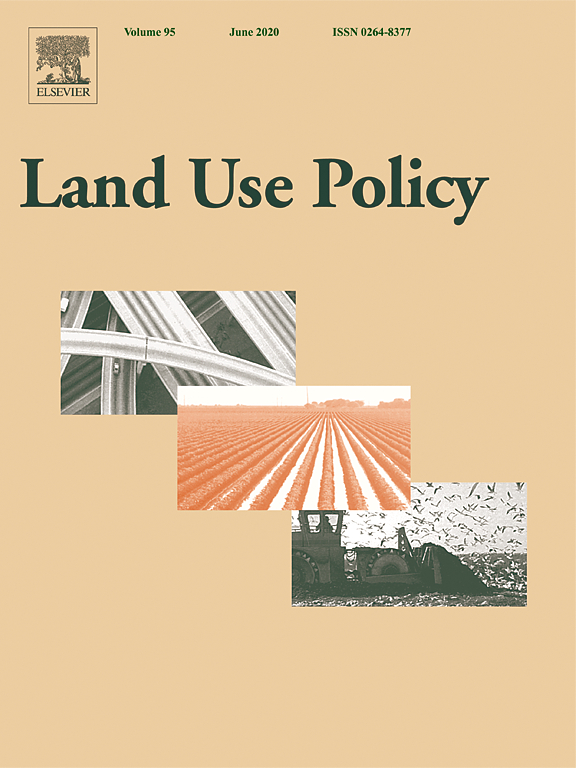Location
Land Use Policy is an international and interdisciplinary journal concerned with the social, economic, political, legal, physical and planning aspects of urban and rural land use. It provides a forum for the exchange of ideas and information from the diverse range of disciplines and interest groups which must be combined to formulate effective land use policies. The journal examines issues in geography, agriculture, forestry, irrigation, environmental conservation, housing, urban development and transport in both developed and developing countries through major refereed articles and shorter viewpoint pieces.
Land Use Policy aims to provide policy guidance to governments and planners and it is also a valuable teaching resource.
ISSN: 0264-8377
Members:
Resources
Displaying 161 - 165 of 279Land fragmentation and production diversification: A case study from rural Albania
We analyze the impact of land fragmentation on production diversification in rural Albania. Albania represents a particularly interesting case for studying land fragmentation as the fragmentation is a direct outcome of land reforms. The results indicate that land fragmentation is an important driver of production diversification of farm households in Albania. We find that land fragmentation stimulates significantly more diversification for subsistence farm households than for market-oriented households.
Conflicts of land expropriation in China during 2006–2016: An overview and its spatio-temporal characteristics
In recent years conflicts of land expropriation in China have received a lot of concern. Recent systematic reviews highlight causes, types and resolution of land conflicts, yet very few of these studies have considered the spatial-temporal characteristics of the issue. Utilizing spatial statistical analysis and statistical software, this paper aims to build a contextual overview on Chinese land expropriation conflicts and explore spatial and temporal distribution of it during 2006–2016. Correlations of land conflict intensity with per capita GDP and urbanization rate have been studied.
The future of agriculture in the shrinking suburbs: The impact of real estate income and housing costs
This paper offers solutions to some of the challenges around maintaining productive agricultural land close to cities in countries facing a decline in urban populations. In such circumstances, some farmers have been observed to convert their land into real estate and leave farming before land prices decline, therefore decreasing the area of agricultural land close to large cities. In contrast, many suburban farmers in developed countries remain in farming even when land prices decline and suburbs shrink.
How private are Europe’s private forests? A comparative property rights analysis
Private forests are widespread in Europe providing a range of ecosystem services of significant value to society, and there are calls for novel policies to enhance their provision and to face the challenges of environmental changes. Such policies need to acknowledge the importance of private forests, and importantly they need to be based on a deep understanding of how property rights held by private forest owners vary across Europe. We collected and analysed data on the content of property rights based on formal legal requirements existing in 31 European jurisdictions.
Criteria for selection and evaluation of biosphere reserves in support of the UNESCO MAB programme in South Africa
The biosphere reserve model is a global designation in accordance with UNESCO’s Man and the Biosphere Programme. Biosphere reserves are required to fulfil three functions as prescribed by UNESCO, namely conservation, sustainable development and logistic support. Worldwide, the 669 biosphere reserves in 120 countries are experiencing different degrees of effectiveness in fulfilling these functions.



